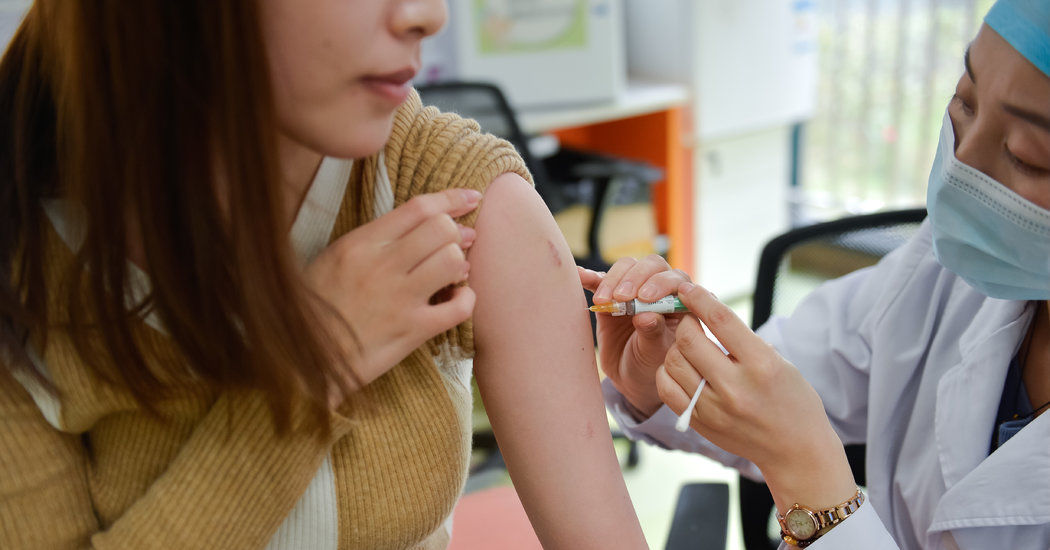
Vaccines against the human papillomavirus have sharply reduced infections, genital and anal warts, and precancerous lesions in young women and girls in more than a dozen wealthy countries, a major new study has found — powerful evidence that these vaccines will ultimately cause major drops in cervical cancer.
The vaccines are so effective that when given to enough young girls, they also give partial protection to both unvaccinated girls and boys, simply because fewer people in sexual networks are carrying the virus, commonly called HPV.
The research, published on Thursday in the Lancet, analyzed dozens of studies that, when combined, included 66 million females and males below the age of 30 living in 14 wealthy countries where HPV vaccines were introduced as early as 2007.
The World Health Organization’s calls to eliminate cervical cancer “may be possible in many countries if sufficient vaccination coverage can be achieved,” said Marc Brisson, a biostatistician at Laval University in Quebec and one of the study’s authors.
In wealthy countries, cervical cancer is no longer a major killer because Pap smears, biopsies and surgery are readily available. Still, many in those countries prefer to avoid warts, the risk of cancer and the stigma of having a sexually transmitted disease.
In poor countries, cervical cancer is a leading cause of female mortality, killing about 300,000 women a year.
The vaccine is also expected to eventually lower rates of death from mouth and throat cancers caused by HPV when it is transmitted by oral sex. These cancers are much more common among men than women: A 2017 study found that the number of American men with HPV-related throat cancer had surpassed the number of American women with cervical cancer.
The team — comprising researchers in Canada, the United States, Australia and Europe — found that in countries where the vaccine had been distributed for more than five years, the two strains of human papillomavirus that cause 70 percent of cancers — HPV 16 and 18 — had decreased by 83 percent among teenage girls and by 66 percent among women aged 20 to 24.
Anal and genital warts dropped by 67 percent among teenage girls, by 54 percent among women aged 20 to 24, and by 31 percent among women aged 25 to 29. Warts fell by half among teenage boys, and by a third among young men up to age 24.
More important, precancerous cervical lesions declined by 51 percent among teenage girls who were screened, and by 31 percent among screened women up to age 24.
Because it can take many years for an HPV infection to progress to cancer, the study was the first to measure precancerous lesions. It is still too early to gather rates of full-blown cancers, but lesions predict them.
The protective effect was strongest in the countries where more females of all ages were vaccinated.
The W.H.O. currently recommends that all girls aged 9 to 14 get the HPV vaccine, but wealthier countries often offer it to both boys and girls, and in a wider range of ages.
In the United States, for example, the Centers for Disease Control and Prevention recommends it for all males and females starting at age 11 and up to age 26.
On Wednesday, a C.D.C. advisory committee recommended that women up to age 45 seek their doctor’s advice about getting the vaccine. While it cannot eliminate strains of the virus that have already been caught, evidence heard by the committee indicated that the vaccine could, for example, protect a divorced or widowed woman who has had very few sexual partners but is beginning to date again.
There are more than 100 strains of HPV, and virtually every sexually active adult becomes at least temporarily infected with some of them, experts say. Only a handful cause cancer or warts.
The newest HPV vaccine is Gardasil 9, which protects against the nine most dangerous strains. Many of the 66 million girls and women in the study received older versions of Gardasil or another early vaccine, Cervarix, that protected against only two strains of HPV.
About 100 countries around the world now recommend HPV vaccination, at least for girls.
While the results from countries like Australia, which introduced the vaccine 12 years ago and where it is widely accepted, were very strong, the researchers cautioned against extrapolating the results to poor countries, where there is less data since the vaccines were introduced more recently.
[Like the Science Times page on Facebook. | Sign up for the Science Times newsletter.]
In the United States, only about half of all adolescents get the full course of HPV shots, according to the C.D.C., although the numbers are slowly rising.
Anti-vaccine activists have spread many false rumors about the HPV vaccine, including the canards that it increases girls’ sexual appetites or causes sudden death, paralysis or premature menopause.
More than 100 million doses of the vaccine have been given in the United States and more than 270 million worldwide, and no pattern showing that it caused any dangerous or lethal outcomes has been found, according to the National Cancer Institute.
Girls who get the HPV vaccine do have a higher risk of fainting than with other shots, according to the C.D.C. It suggests that the vaccine be given while the recipient is sitting or lying down, and that he or she be watched for 15 minutes afterward.

